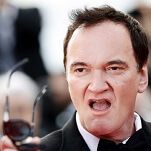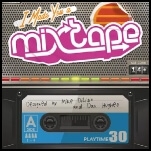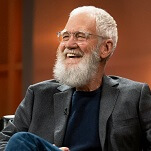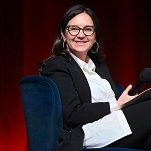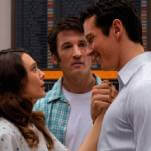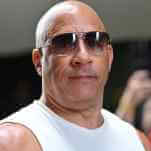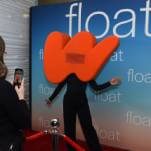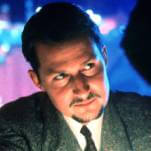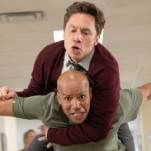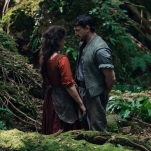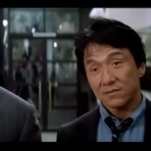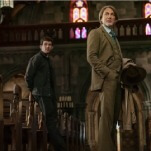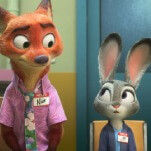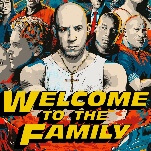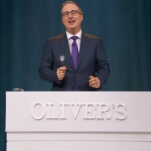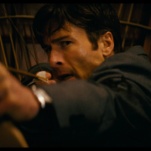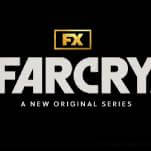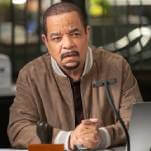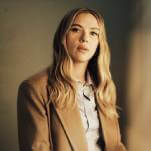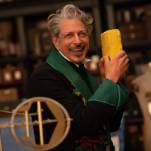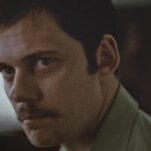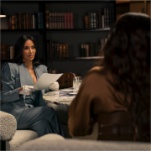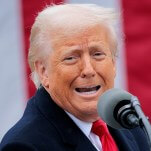The first film Eastwood has acted in without directing since In The Line Of Fire in 1993, Trouble With The Curve is the directorial debut of Robert Lorenz, who worked for Eastwood first as an assistant director, then as producer for the last decade. The film is, unsurprisingly, Eastwood-like in many respects, but also a more relaxed, modest effort than Eastwood has allowed himself as a director in a while. Here, Eastwood plays a scout for the Atlanta Braves—an aging scout, specifically—with a reputation built on spotting talent early and bringing it up through the ranks. With no use for newfangled computers—the film can’t even bring itself to use the word “sabermetrics”—he relies on word of mouth, small-town newspapers, and, most of all, his eyes, ears, and gut. Trouble is, his gut remains effective, but his ears need a little help from a hearing aid, and his eyes are in worse shape than he’s letting anyone know.
That’s particularly problematic since young, computer-using whippersnapper Matthew Lillard would like to squeeze Eastwood out, no matter how much support Eastwood has from his old front-office pal John Goodman. And it strains Eastwood’s already-difficult relationship with daughter Amy Adams, a hard-working lawyer who’s gotten this close to a partnership. But even though it isn’t in her career’s best interest, Adams takes Goodman’s advice and follows her dad down to North Carolina, where he’s been dispatched to keep an eye on a brash slugger. He isn’t the only one there for that reason, either. Joining them is Justin Timberlake, a pitcher-turned-scout whom Eastwood shepherded up to the big leagues, only to watch him get burned out when the Braves traded him away.
The film takes great, low-key pleasure in immersing itself in the lower tiers of the baseball business, showing scouts spending long days by the sandlot and long nights swapping stories and jibes at the bar. Moneyball it isn’t, and the film likes that world so much that it arrives at a high-stakes final act almost with a sigh of obligation. Curve is, refreshingly, the rare sports movie that eschews a finale tied to a big game, though the climax is still unabashedly corny. And the unglamorous details of scouting life, with its diner food and by-the-week motor-lodge accommodations, only distracts from the poky pacing and dialogue that spells out, and repeats, the film’s central themes up to a point.
Those themes are a little more complex than what gets said in the dialogue, though. Trouble With The Curve often plays like a kids-these-days affirmation of its protagonist’s old-fashioned ways, but as much as Eastwood seems to enjoy playing cranky old coots, they’re cranky old coots who realize their time is passing, and that that isn’t always a bad thing. Just as the curmudgeon of Gran Torino came to see that his Detroit belonged to a new generation—and to people of a different background than his own—here, Eastwood’s character begins to see Adams in a different light as he takes stock of his past mistakes and takes pride in the accomplished, independent woman she’s become. (The progressive streak of the material Eastwood chooses as an actor-director is periodically at odds with his recent grumpy-old-man, chair-abusing appearance at the Republican National Convention.) Adams and Eastwood find real drama in material that, like its star, is creaky but sturdy, turning it into a study of lost opportunities and parental regret. There’s a vulnerable, bitter person beneath the feisty front Adams shows the world, and hidden depths of thoughtfulness beneath Eastwood’s crustiness, conveyed with little more than grunts and a furrowed brow. That’s the sort of dramatic shorthand available only to stars with decades of experience to back it up. In Trouble With The Curve, Eastwood plays a reminder of an older way of doing things, a professional whose likes the world won’t see again once he’s gone. The role isn’t much of a stretch.




